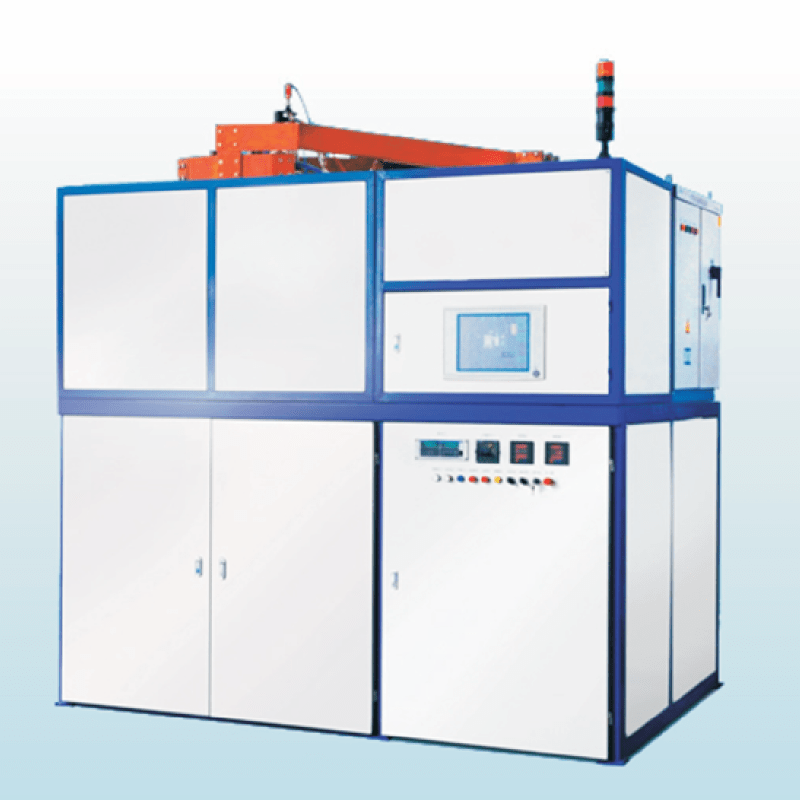Fortgeschrittene Thermalsysteme zur Isolation
Es sind die exzellenten Wärmeschutzsysteme guter Hochtemperatur-Vakuumanlagen. Diese Systeme nutzen faserige Materialien wie Wärmewiderstände und keramische Fasern, um hohe innere Temperaturen bei geringem Wärmeverlust aufrechtzuerhalten. In energieintensiven Prozessen, wo die Reduktion des Energieverbrauchs wichtig ist, ist dies äußerst bedeutend. Zum Beispiel kann eine mehrschichtige Isolation die Energieeffizienz erhöhen und zu Betriebskosteneinsparungen von über 20 % führen. Unternehmen müssen die wärmeleitenden Eigenschaften der Isolationsmaterialien kennen, damit sie die richtigen Arten für ihre Zwecke auswählen können.
Überlegenes Temperaturbereichs- und Stabilitätspotenzial
Hochtemperatur-Vakuumanlagen werden weltweit weitgehend für die gleichmäßige Verarbeitung von Materialien bei sehr hohen Temperaturen bis zu 2200°C eingesetzt, was für alle Arten von Metallen, Keramik und Supraleitern essenziell ist. Dies ist eine wichtige Fähigkeit für Bereiche wie Luft- und Raumfahrt sowie Automobilindustrie, wo das Anpassen der Material Eigenschaften entscheidend ist. Statistisch sollte sich die Produktqualität verbessern und die Rate an Nachbearbeitungen sinken, wenn die Temperaturschwankungen auf etwa 5°C um die Sollwerte begrenzt werden. Eine solch feine Temperaturregulierung bedeutet, dass Vakuumanlagen das bevorzugte Werkzeug sind, wenn hohe Temperaturen und ein sehr kontrollierter Prozess erforderlich sind.
Vakuumintegrität und Lecksuche
Die Integrität des Vakuums ist etwas, das bei der Betriebsweise von Hochtemperatur-Vakuumanlagen essenziell ist, da selbst die geringste Einführung von Verunreinigungen in vielen Prozessen, die bei hohen Temperaturen stattfinden, sehr schädlich sein kann. Ein wesentlicher Faktor für eine solche Integrität ist die Verwendung moderner Technologien zur Lecksuche. Bei Verwendung als Doppelkanal-Lecktest kann durch die rechtzeitige Identifizierung möglicher Lecks Stillstand minimiert und eine größere Zuverlässigkeit während der Operation erreicht werden. Die Branchenstandardanforderung besteht darin, das Vakuum auf weniger als 1 Pa für die meisten kritischen Anwendungen zu halten, daher sind robuste Lecksuchsysteme entscheidend, um Prozesse vor Verunreinigungen und Ineffizienz zu schützen.
Präzisionsheizung und Temperaturregelmechanismen
Technologie zur gleichmäßigen Wärmeverteilung
Die HT-Wärme-Technologie zur gleichmäßigen Wärmeverteilung ist eine wichtige Eigenschaft für Hochtemperatur-Vakuumanlagen, da Materialien während des gesamten Erwärmungsprozesses gleichmäßig erhitzt werden. Diese Gleichmäßigkeit kann durch Techniken wie Hochfrequenz-Induktionsheizung oder Widerstandserwärmung erreicht werden. Ungleichmäßige Temperaturverteilungen können zu Spannungen und Materialschäden führen und letztlich die Produktintegrität gefährden. Daher ist es wichtig, die Wärmeverteilung relativ konstant zu halten, um die Qualität zu gewährleisten. Studien zeigen, dass eine gleichmäßige Erwärmung bis zu 30 % Verbesserung in der Produktkonsistenz bietet und daher entscheidend für präzise und zuverlässige Fertigung ist.
Geschlossene PID-Regelsysteme
Geschlossene PID-Regelschleifen spielen in Vakuumanlagen eine entscheidende Rolle bei der Erreichung einer präzisen Temperaturregelung. Diese Regelsysteme gewährleisten eine optimale Temperaturregelung des Ofens durch ständiges Feedback an die Heizelemente, um den Sollwert beizubehalten. PID-Regler sind sehr hochwertig und erfüllen die Anforderungen an präzise Temperaturregelung, wie sie bei Operationen wie der Halbleiterfertigung benötigt werden, wo die Temperaturabweichung auf weniger als 1°C reduziert werden kann. Ein Sektor, der eine genaue Temperaturregelung erfordert, ist die Lebensmittel-, Getränke-, Pharmazeutika- und Chemieindustrie, in der PID weit verbreitet ist, um die für einen effektiven Betrieb des Heißprozesses notwendige Genauigkeit und Wiederholbarkeit zu erreichen.
Anpassbare Thermoprofile
Eine der auffälligen Merkmale moderner Hochtemperatur-Vakuumpfannen ist ihre Fähigkeit, benutzerdefinierte Thermoprofile zu erstellen, die den Betreibern ermöglichen, Erhitzungs- und Abkühlzyklen anzupassen, um spezielle Materialanforderungen zu erfüllen. Verschiedene Materialgrade erfordern besondere thermische Prozesse, und die Flexibilität bei den individuell gestalteten Profilen gewährleistet die optimalen Bearbeitungsbedingungen. Auf Basis von Nutzerbefragungen erfahren Unternehmen mit der Möglichkeit, eigene Thermoprofile zu erstellen, einen Produktivitätsanstieg von bis zu 25 %. Diese Entwicklung unterstreicht, dass alle thermischen Bearbeitungsanlagen den speziellen Anforderungen der verarbeiteten Materialien angepasst werden müssen, wenn die Produktions-effizienz gesteigert werden soll.
Reines Verarbeiten und Kontaminationsreduzierung
Oxidationsfreie Materialbearbeitung
Es ist essenziell, Materialbeschädigungen während der Verarbeitung zu vermeiden, und Hochtemperatur-Vakuumanlagen dienen dazu, die Oxidation von Metallen zu verhindern. Dies ist besonders wichtig, da Oxidation ernsthafte Mängel an den Produkten verursachen kann, was sich negativ auf die Leistung auswirkt, und manchmal die Effizienz um mehr als 40 % erhöht. Die Nutzung einer Vakuumumgebung ist insbesondere für Branchen wie die Verarbeitung von Titanlegierungen, die äußerst empfindlich gegenüber Qualitätsverlusten durch Oxidation sind, von besonderer Bedeutung. Offensichtlich ist die Verarbeitung des Materials ohne Oxidation nicht nur eine Frage technologischer Führung, sondern in diesem Fall eine absolute Voraussetzung.
Beseitigung der Oberflächenentkohlung
Aufgrund der Tatsache, dass Oberflächenentkohlung die mechanischen Eigenschaften von Stahl stark verschlechtern kann, ist die Verhinderung der Oberflächenentkohlung für Anwendungen bei hohen Temperaturen wichtig. Die Entkohlung verringert die Nachgiebigkeitsgrenze der Komponente, was die Effizienz der Komponente für ihre vorgesehene Verwendung reduziert. Effiziente Methoden zur Entfernung der Entkohlung umfassen die Bereitstellung einer kontrollierten Vakuumanlage während der Bearbeitung. Forschungen haben gezeigt, dass wenn die Entkohlung beseitigt wird, die Nachgiebigkeitsgrenze um bis zu 15 % gesteigert werden kann. Dieses Ergebnis unterstreicht die Bedeutung der Unterdrückung dieses Prozesses, um die mechanische Integrität bei der Stahlfertigung sicherzustellen.
Integration von Edelgasen für kritische Anwendungen
Die Zusatzung eines träge wirkenden Schutzgases wie Argon oder Stickstoff ist ein bevorzugter Ansatz, um eine kontaminationsfreie Umgebung in Vakuumöfen bereitzustellen, insbesondere für reaktive Metalle. Diese Integration ist wichtig, da sie sicherstellt, dass die Materialien nicht schädlichen Reaktionen mit der umgebenden Atmosphäre ausgesetzt sind. Diese Strategie wird auch durch statistische Daten untermauert, die nahelegen, dass die Verwendung von Trägergas die potenzielle Kontamination bei präzisionsorientierten Prozessenanwendungen um 25 % reduzieren kann. Dies gewährleistet nicht nur die Qualität der Materialien, sondern auch die Zuverlässigkeit der Endprodukte, insbesondere im Bereich der Hochpräzisionsfertigung.
Geringerer Energieverbrauch: Kennzahlen
Ihre Energie ist das Erste, was Sie an Hochtemperatur-Vakuumpfannen bemerken, die sie effizient machen, wie hoch-effiziente Heizelemente, die Ihnen auf Dauer Geld sparen. Unternehmen, die moderne Heiztechnologie in ihren Vakuumpfannen einsetzen, behaupten Energieeinsparungen von 15 % bis 25 % – bedeutende Kosteneinsparungen. Durch die Überprüfung von Energieverbrauchstrends können Unternehmen wertvolle Informationen sammeln, die es ihnen ermöglichen, die Kosten im Gesamtkostenbudget besser zu verwalten und wettbewerbsfähiger auf dem Markt zu werden.
Optimierte Kühlsystem-Designs
Das innovative Design des Kühlungssystems in Hochtemperatur-Vakuumanlagen hat große Bedeutung für Energieeinsparungen und die Optimierung der Wärmeextraktion[R]. Diese Arten von Systemen verhindern Überhitzung sowie den damit verbundenen vorzeitigen Ausfall der Anlage und erhöhte Wartungskosten. Die Nutzung topaktueller Kühlungssysteme ermöglicht es Unternehmen außerdem, 10%-20% an Energie zu sparen, wobei sie gleichzeitig ihren eigenen grünen Unternehmensrichtlinien folgen und den gesamten ökologischen Fußabdruck des Unternehmens minimieren.
Nachhaltigkeit in Hochtemperatur-Betrieben
Die Nachhaltigkeit nimmt in Hochtemperaturumgebungen eine immer wichtigere Rolle ein, mit dem Fokus auf Aktivitäten wie Materialrecycling und Energieeffizienz. Nachhaltiges Image: Die Einführung umweltfreundlicher Technologien kann Unternehmen helfen, ihr nachhaltiges Image aufrechtzuerhalten und sogar Geld für die im traditionellen Maschinenbetrieb verwendete Energie zu sparen. Branchenberichte zeigen, dass diese Nachhaltigkeitsmaßnahmen den Kohlenstofffußabdruck um bis zu 30 % reduzieren können, was die Notwendigkeit unterstreicht, nachhaltige Lösungen in Vakuumofenprozessen umzusetzen.

Kosteneinsparungen durch Haltbarkeit und Leistung
Langfristige Gerätelebensdauer
Eine hochwertige Vakuumanlage kann die Lebensdauer der Anlage verlängern und eine längere Austauschzeit ermöglichen. Diese robusten Öfen bieten langfristige Einsparungen für Unternehmen, die keine Ausfälle durch viele Ersatzteile wünschen. Branchenstudien zeigen, dass gute Öfen gut für einen Zeitraum von über 20 Jahren problemlos arbeiten können, was eine bessere Rendite bedeutet. Mit Maschinen und Anlagen, die 'Für Dauer gebaut' sind, können Kunden sicher sein, dass sie noch jahrelang von einem 'guten Preis-Leistungs-Verhältnis' profitieren, da sie potenziell Tausende einsparen.
Reduzierte Wartungsanforderungen
Die robuste Konstruktion von Vakuumöfen verringert den Wartungsaufwand erheblich, was bedeutet, dass Unternehmen mehr produzieren als sie für Reparaturen einplanen müssen. Die Umsetzung eines umfassenden Wartungsprogramms für hochwertige Systeme kann die Wartungskosten um bis zu 30 % senken und so die gesamte Betriebswirtschaftlichkeit erhöhen. Definition 1 und 2 der Fälle der Unternehmen, die im Rahmen dieser Studie beobachtet wurden, zeigen, dass Unternehmen, die regelmäßige Wartungsintervalle eingehalten haben, weniger Produktionsunterbrechungen hatten und mit gleicher Menge und Qualität fortfuhren. Diese reduzierten Wartungsbedarfe sind nicht nur wünschenswert, sondern unterstützen auch die kontinuierlichen Geschäftsbetriebsabläufe!
ROI-Analyse für industrielle Nutzer
Eine Analyse der Investitionsrendite (ROI) kann durchgeführt werden, um Unternehmen dabei zu helfen, die finanziellen Vorteile eines Investitions in Öfen zu verstehen. Einige wichtige Maßstäbe für die RoI sind geringere Energiekosten, geringere Wartungskosten und eine bessere Produktqualität. Jahresweise Vergleiche der ROI sprechen oft dafür, dass die Kapitalinvestitionen in diese Öfen sich über die Zeit lohnen. Durch die Betrachtung dieser Finanzindikatoren können Unternehmen ihre Technologie-Investitionsentscheidungen gemäß einer umfassenderen wirtschaftlichen Planung anpassen und intelligent vorankommen.
FAQ
Welche Materialien werden in den fortschrittlichen thermischen Isolationssystemen von Vakuufofen verwendet?
Fortschrittliche thermische Isolationssysteme in Vakuufofen verwenden typischerweise Materialien wie faserige Isolierung und Keramikfaser, um hohe Innentemperaturen effizient zu erhalten.
Wie stellen Vakuufofen sicher, dass das Materialoxidationsfrei verarbeitet wird?
Vakuumanlagen schaffen eine Vakuumumgebung, die Oxidation verhindert, was bei Prozessen wie der Fertigung von Titanlegierungen entscheidend ist, da hierbei die Materialintegrität von großer Bedeutung ist.
Was ist die Rolle der Integration von Edelgasen in Vakuumanlagen?
Die Integration von Edelgasen umfasst die Verwendung von Gasen wie Argon und Stickstoff, um eine kontaminationsfreie Umgebung zu gewährleisten, insbesondere für reaktive Metalle, wodurch eine hochwertige Materialbearbeitung sichergestellt wird.
Wie tragen Hochtemperatur-Vakuumanlagen zur Energieeffizienz bei?
Durch fortschrittliche Heizelemente und innovative Kühlungssysteme können Hochtemperatur-Vakuumanlagen den Energieverbrauch um 15 % bis 25 % senken und so erhebliche Betriebskosteneinsparungen bieten.
Inhaltsverzeichnis
- Fortgeschrittene Thermalsysteme zur Isolation
- Überlegenes Temperaturbereichs- und Stabilitätspotenzial
- Vakuumintegrität und Lecksuche
- Präzisionsheizung und Temperaturregelmechanismen
- Reines Verarbeiten und Kontaminationsreduzierung
- Geringerer Energieverbrauch: Kennzahlen
- Optimierte Kühlsystem-Designs
- Nachhaltigkeit in Hochtemperatur-Betrieben
- Kosteneinsparungen durch Haltbarkeit und Leistung
- FAQ


